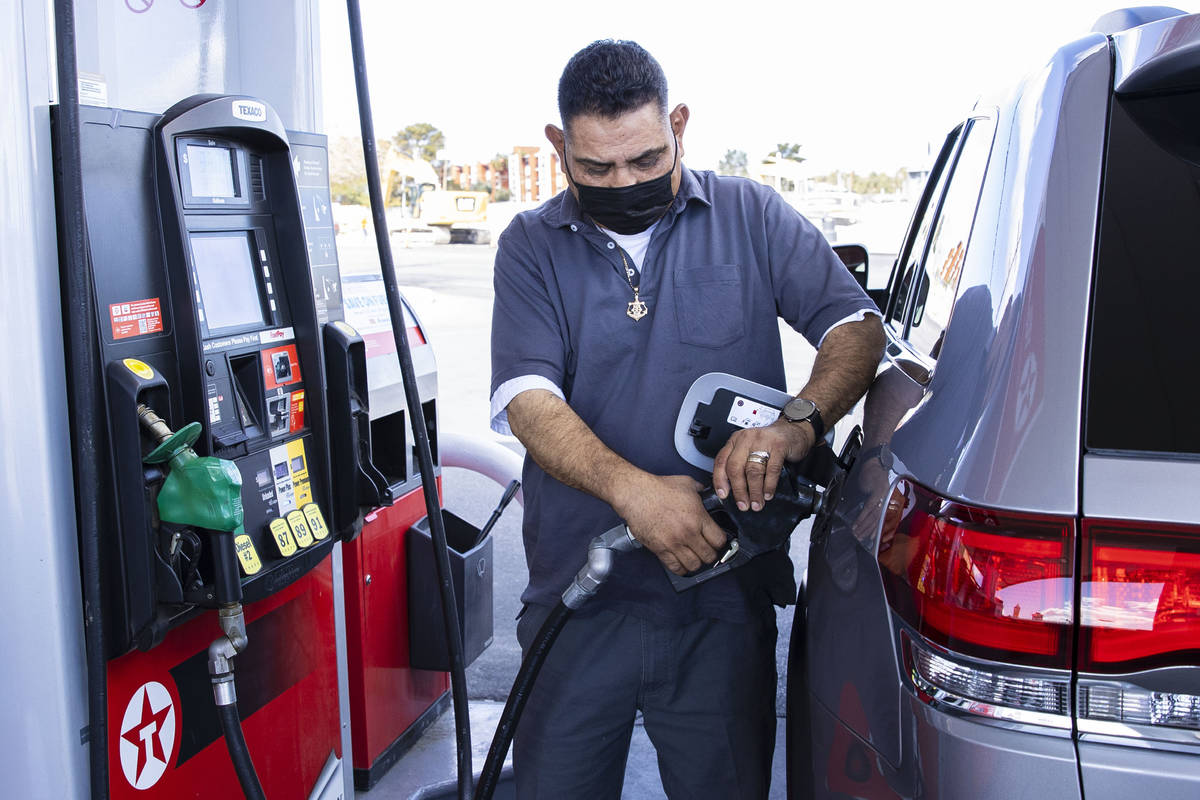Gasoline prices have risen in the past month, with the average price of the normal unleaded product rising 37 cents in the Las Vegas metropolitan area.
Locally, the average price went from $ 2.84 a month ago to $ 3.21 on Monday, according to AAA.
Silver State’s average gas price also rose 37 cents last month, while the national average jumped 38 cents, according to AAA data. The price at the pump has risen 72 cents since November 20.
“This increase is not something isolated only in the West,” said Sergio Avila, a spokesman for AAA Nevada. “It is something that is happening across the country. Each state’s average has risen by double digits since February, resulting in one in 10 gas stations with pump prices of $ 3 per gallon or more. “
Industry analyst Trilby Lundberg of the Lundberg Survey said the price increase was due to rising oil costs, the prolonged effect of power outages that caused several Texas refineries to shut down or reduce operations last month. , and rising prices for renewable fuel credits.
Patrick De Haan, chief oil analyst at GasBuddy.com, said it was all about supply and demand.
“In the past few months, when we started to see improvements from the pandemic, Americans have been finding places to go,” said De Haan. “Demand for gasoline is now below where it was before the pandemic.”
Growing demand
De Haan attributes the increase in the number of drivers on roads across the country to the continued release of the vaccine, states easing restrictions on coronavirus and people returning to work.
Despite rising demand, oil producers who cut production during the pandemic have yet to rise again, said De Haan.
“That is why prices have increased since November last year,” said De Haan. “Everyone likes to point out that the election was in early November, but so was the fact that the vaccine was coming. It had a significant promise to take oil demand back to where it would otherwise be. “
De Haan said the gas price hike is not tied to President Joe Biden’s inauguration, as many have speculated online.
“Apparently, there are thousands of crude oil analysts out there who decide what is driving prices,” said De Haan. “Although demand for gasoline has largely recovered to levels just under a year ago, many other fuels are not – aviation fuels are one of them. The fact that before COVID there was no shortage of oil pipeline capacity, there is no shortage of oil pipeline capacity, as the volumes are even lower. “
Biden’s decision to stop work on the Keystone pipeline does not affect gas prices at the moment, said De Haan.
“If you take a pipeline that has been used and that you have been relying on for years, you will have a problem,” he said. “But simply removing a pipeline that is not working from the equation is not something that would significantly increase prices. This could happen in the future, if there was enough return from crude oil production for us to need the capacity of the pipeline, but that would take years ”.
No relief soon
Another misconception is that Biden has banned hydraulic fracturing, also known as fracking, which many have cited as one of the reasons for the increase in gas prices. De Haan said this is not true, as Biden placed a 60-day moratorium on new wells on federal land, which took effect in January.
He noted that oil companies are producing about 10 million barrels a day, down from 13 million barrels a day that they produced a year ago.
“Until we get back to the pre-pandemic level of 13 million barrels a day, no oil company will want to drill a new drill, whether on federal or private land,” he said.
De Haan expects prices to continue to rise until oil producers increase production, which he does not believe will happen anytime soon.
Avila agreed and noted that crude oil prices are on the rise in two years. U.S. benchmark crude rose 57 cents on Monday to $ 66.18 a barrel on the New York Mercantile Exchange’s electronic trading floor.
“Crude oil prices represent about 50% of the price that drivers pay at the pump,” said Ávila. “With the use of refineries at a record low, gasoline supplies are narrowing, demand is rising modestly due to loosening restrictions and rising oil prices, cheap prices are in the rear view mirror for the immediate future.”
Contact Mick Akers at [email protected] or 702-387-2920. follow @mickakers on twitter. The Associated Press contributed to this report.
